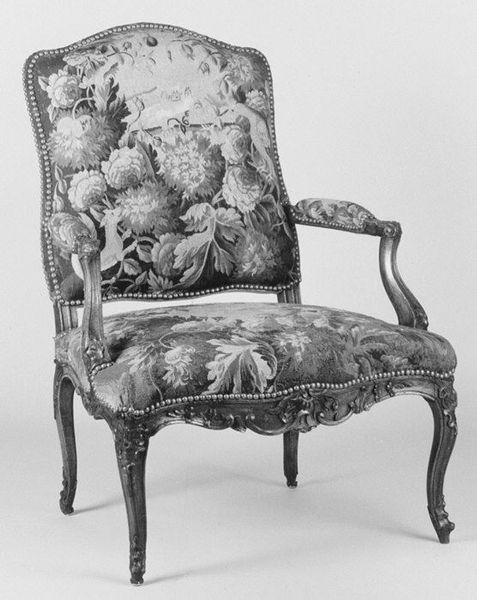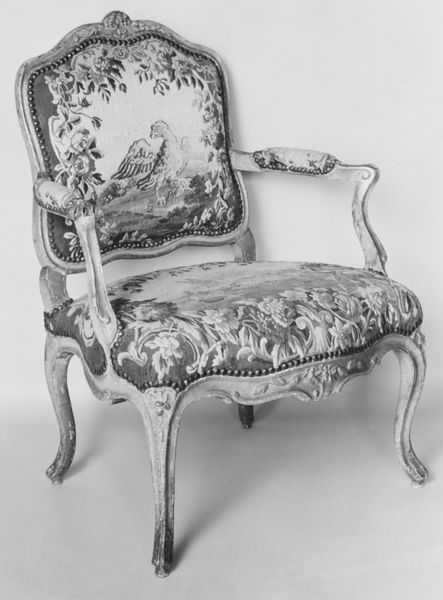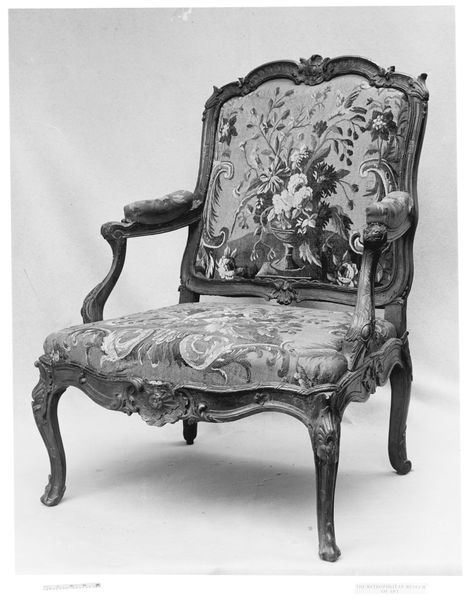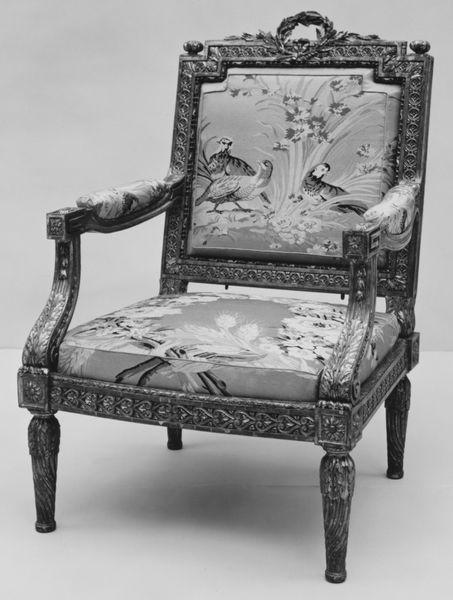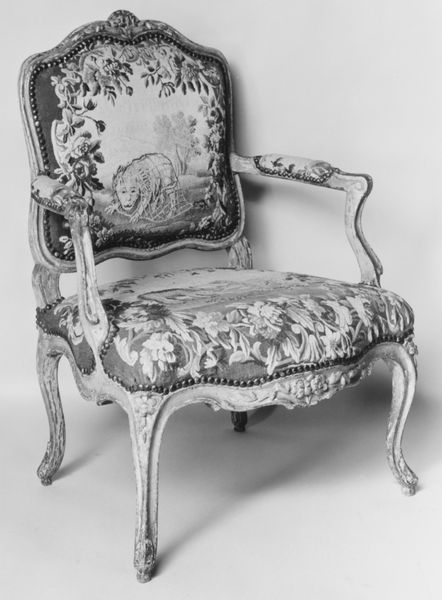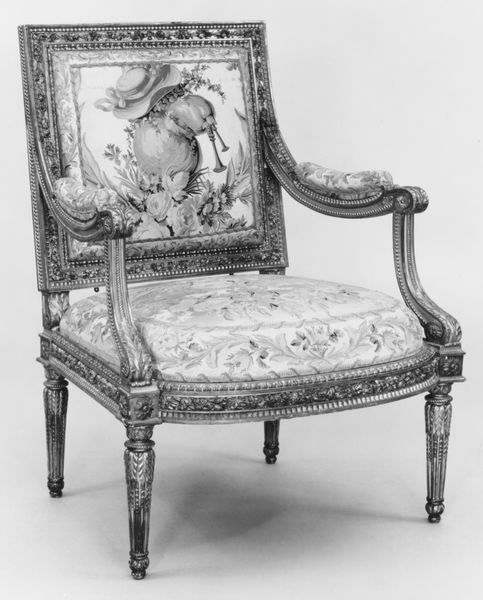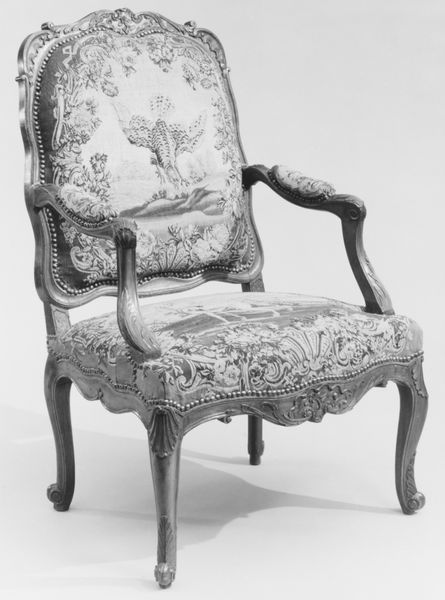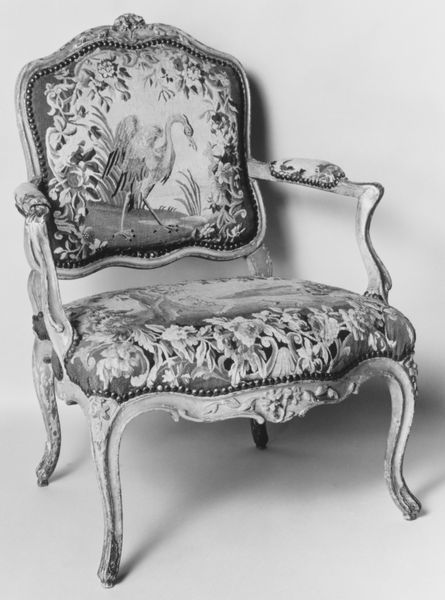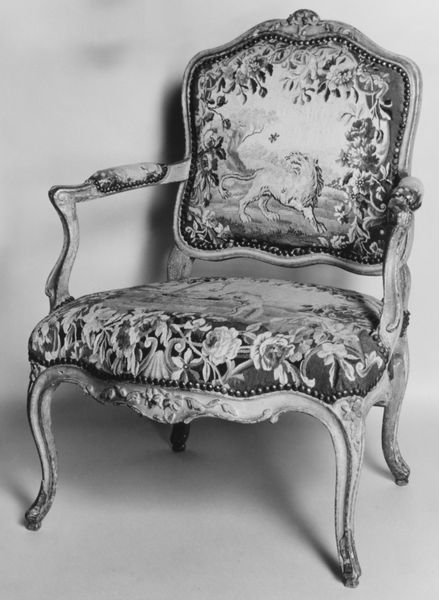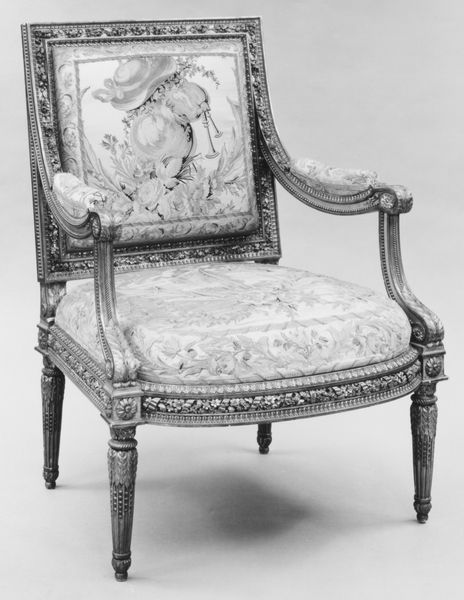
sculpture, wood
#
sculpture
#
furniture
#
sculpture
#
wood
#
decorative-art
#
rococo
Dimensions: Overall: 41 3/4 × 27 5/8 × 22 in. (106 × 70.2 × 55.9 cm)
Copyright: Public Domain
Curator: Let's take a moment to appreciate this armchair, one of a set of four, believed to be crafted sometime in the 18th century. It's currently held at the Metropolitan Museum of Art. What strikes you about it at first glance? Editor: It looks incredibly plush, almost excessively so. The densely packed floral tapestry practically vibrates, and the dark palette makes it feel somber, despite the lighthearted Rococo curves in the woodwork. Curator: Indeed. The Rococo style, which was at its height during this period, favored asymmetrical designs, flowing lines, and ornate decoration – all meant to express lightness and grace, a sharp departure from the more rigid Baroque period. These chairs likely adorned a room in a wealthy household, serving as both functional seating and a statement of refined taste. Editor: The upholstery is quite assertive, really dominating the form of the chair itself. There’s almost a tension between the wooden structure, which seems to want to leap and dance, and the fabric, which holds everything visually quite grounded. The contrast draws the eye from point to point around the form. Curator: Precisely. The choice of the Aubusson tapestry for upholstery speaks to a particular level of luxury. These tapestries were highly valued, created in a French manufacturing center, and were renowned for their detail and artistic quality. Having them on furniture signified not just wealth but also access to high-end craftsmanship endorsed, effectively, by the Crown. Editor: Do you think the rather serious coloration here—dark foliage with almost ghostly flowers—would have been as arresting then as it is to a modern eye? Curator: Color, its perception, and its political value, certainly held different weight. Sumptuary laws restricted the wearing of certain colors to specific social classes, for example. But yes, I think the interplay of light and dark in this particular chair might have stood out then, indicating a level of connoisseurship beyond simple display of riches. A carefully considered, almost scholarly aesthetic, maybe? Editor: Perhaps. And, as an object designed for a specific purpose within a larger space, I wonder how it informed social interaction... Curator: These chairs tell us so much about power, patronage, and the evolving idea of comfort.
Comments
No comments
Be the first to comment and join the conversation on the ultimate creative platform.
